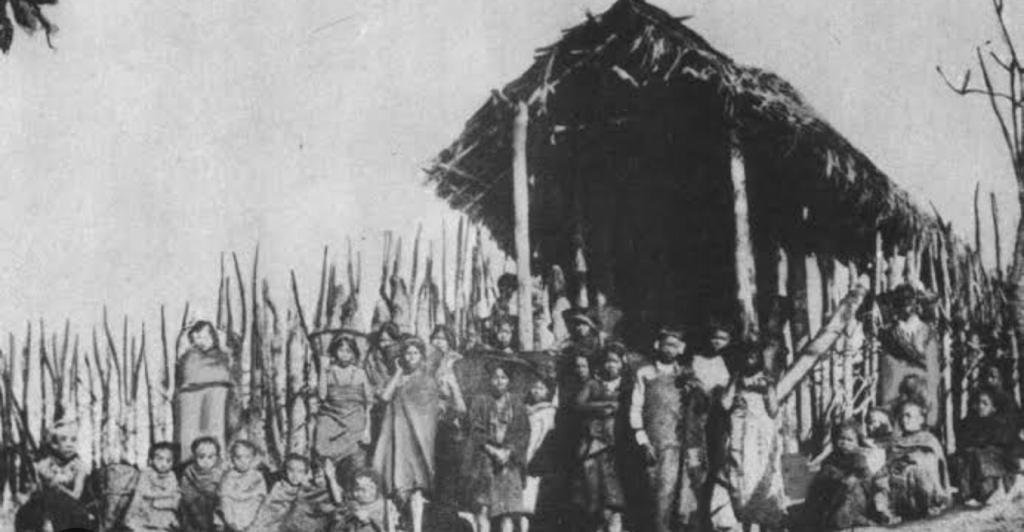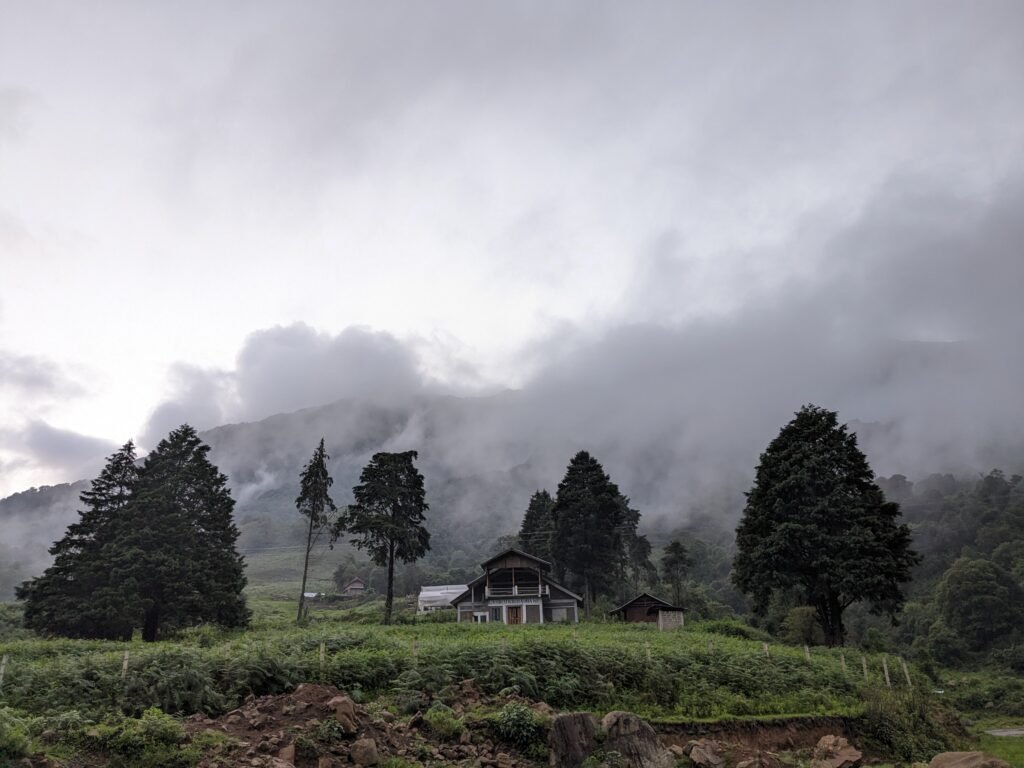Nagaland is a unique and enchanting state that boasts a rich tapestry of history, culture, and traditions. Home to diverse indigenous tribes, this picturesque region has a history that spans millennia. From ancient civilisations to colonial rule and independence struggles, Nagaland’s past is a compelling journey of resilience, identity, and evolution.
Ancient and Pre-colonial Period
The early history of Nagaland is largely shrouded in mystery, with limited written records. Archaeological excavations have, however, revealed glimpses of the region’s ancient past. Remnants of ancient megalithic structures, artifacts, and tools suggest the presence of a sophisticated civilisation that flourished during the prehistoric and early historic periods.
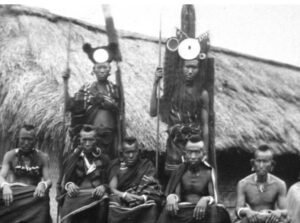
The area was inhabited by numerous tribes, each with unique customs, languages, and social structures. The Nagas, a collective term for these tribes, were primarily agrarian communities practising shifting cultivation and animal husbandry.
The ancient and pre-colonial period of the Nagas is a fascinating chapter in the history of the northeastern region of India. Comprising various indigenous tribes, the Nagas have a rich and diverse cultural heritage that dates back thousands of years. Though much of this era remains shrouded in mystery due to the scarcity of written records, archaeological findings and oral traditions provide valuable insights into the early lives of the Nagas.
Origins and Migration
The origins of the Nagas are a subject of ongoing debate among historians and anthropologists. The Naga tribes are considered part of the Tibeto-Burman linguistic family, but their exact migration routes and ancestral homeland remain uncertain.
According to oral traditions passed down through generations, the Nagas believe they emerged from a subterranean world and eventually settled in the Naga Hills of present-day northeastern India. The migration likely took place over many centuries, with different tribes moving into the region from various directions.
Societal Structure and Culture
In ancient times, Naga society was predominantly tribal and agrarian. The tribes lived in close-knit communities with distinct customs, languages, and practices. While the Nagas had a similar social structure, each tribe maintained its unique identity.
Village councils, known as “morungs,” were crucial in governance and decision-making. The elderly held considerable influence as revered advisors and custodians of tribal wisdom. Additionally, warrior traditions were highly valued, as the Nagas often defended their territories against rival tribes and external threats.
Cultural heritage was preserved and transmitted through oral traditions, folktales, songs, and rituals. Festivals, dances, and ceremonies were integral to Naga life, celebrating the changing seasons, agricultural cycles, and significant life events.
Economic Activities
Agriculture was the primary livelihood of the ancient Naga tribes. They practised shifting cultivation, known as “jhum” or “slash-and-burn” agriculture. This method involved clearing patches of land, cultivating crops for a few years, and then allowing the land to regenerate while moving on to another area.
Apart from agriculture, the Nagas engaged in activities like hunting and gathering, which supplemented their food supply. They also practised traditional crafts like weaving, pottery, and metalwork, creating intricate designs that reflected their unique cultural identity.
Religious Beliefs
The Nagas held animistic beliefs deeply rooted in nature and the spirits of their ancestors. They worshipped various deities, spirits, and natural elements like mountains, rivers, and forests. Ceremonies and rituals were conducted to seek these spiritual forces’ protection, prosperity, and guidance.
Inter-tribal Relations
Interactions between Naga tribes were complex and dynamic. While some tribes formed alliances and enjoyed peaceful relations, others engaged in conflicts over territorial disputes, resources, or perceived slights. Feuds between tribes were common, and this intricate web of alliances and rivalries shaped the region’s socio-political landscape.
Contact with Ahoms and British Rule
The Ahom dynasty, centred in present-day Assam, significantly influenced the Naga Hills during the medieval period. Frequent skirmishes occurred between the Ahoms and various Naga tribes, leading to varying degrees of assimilation and resistance.
In the early 19th century, British colonialists arrived in the region, and the Naga Hills came under their rule. Initially interested in controlling the trade routes, the British gradually extended their regional administration. The process of British penetration was met with resistance from some Naga tribes, who fiercely protected their autonomy and territory.
Contact with the Ahoms
The Ahom dynasty was a powerful kingdom that ruled over the neighbouring region of Assam from the 13th to the 19th century. During the medieval period, the Ahoms had a notable influence on the Naga Hills, and their interactions with the Naga tribes were cooperative and confrontational.
The Ahoms sought to expand their territory, often bringing them into conflict with various Naga tribes inhabiting the hills. Some Naga tribes, recognising the strength of the Ahoms, submitted to their authority and paid tributes. Others fiercely resisted the Ahom rule and defended their lands and autonomy.
Despite occasional hostilities, there were also periods of peaceful trade and cultural exchanges between the Ahoms and certain Naga tribes. The Ahoms’ presence in the region undoubtedly impacted the Naga way of life and, in some cases, led to the assimilation of certain cultural elements.
British Rule in the Naga Hills
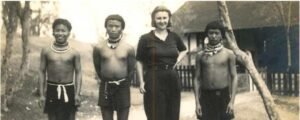
The British East India Company’s expansion into the northeastern region of India brought them to the Naga Hills in the 19th century. Initially, the British were interested in controlling trade routes and establishing administrative control over areas of strategic importance.
The process of British penetration into the Naga Hills was met with resistance from several Naga tribes who sought to protect their territorial integrity and traditional way of life. The British encountered challenges in bringing the Naga tribes under their direct rule due to the region’s rugged terrain and the Naga people’s fierce determination to retain their independence.
In 1832, the British established their first post in the Naga Hills, but only in the late 19th and early 20th centuries could they establish a more substantial administrative presence. The Naga Hills were initially administered as an Excluded Area and later as a Partially Excluded Area under the Government of India Act of 1935. These designations allowed for some degree of autonomy for the Naga tribes within the British colonial framework.
Impact on Naga Society
The Ahom and British influences had varied impacts on Naga society. While contact with these external forces changed the region’s political landscape and economic dynamics, the core of Naga identity, culture, and social structure remained resilient.
The British introduced Western education and Christianity, which led to the spread of education and the adoption of new religious beliefs among certain Naga communities. At the same time, it also contributed to the development of written scripts for some Naga languages, allowing for the preservation of their oral traditions in written form.
However, British rule also brought its share of challenges, as it led to the imposition of taxes and labour demands on the Naga people, often resulting in local resistance and uprisings.
The Naga Independence Movement
During the mid-20th century, a fervent desire for independence began to sweep across the Naga Hills. Fueling this sentiment was the Naga National Council (NNC) formation in 1946, led by Angami Zapu Phizo, which became the primary political platform for the Naga independence movement.
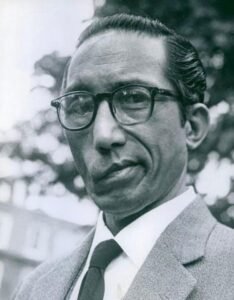
The demand for a separate Naga homeland, called “Nagalim,” became the central objective of the NNC. The conflict escalated, and in 1954, the Naga Hills District, which included the present-day state of Nagaland, was declared a “disturbed area.” The government’s response to the insurgency was met with violence and counter-violence, leading to a protracted armed struggle.
The Naga Independence Movement is a long-standing struggle for self-determination and sovereignty by the Naga people of northeastern India. The movement seeks to establish an independent Naga homeland called “Nagalim” or “Nagaland”, where the Naga tribes can govern themselves and preserve their distinct cultural identity and way of life.
The root cause of the Movement
The seeds of the Naga Independence Movement were sown during the British colonial era when the Naga Hills came under British rule. The British administration’s efforts to establish control and taxation in the region were met with resistance from the Naga tribes, who fiercely guarded their autonomy and territory. Various uprisings against British rule occurred in the early 20th century, indicating the early stirrings of a collective Naga identity.
Formation of the Naga National Council (NNC)
The modern phase of the Naga Independence Movement began in the mid-20th century with the Naga National Council (NNC) formation in 1946. The NNC was led by Angami Zapu Phizo, who became the prominent face of the Naga struggle.
The NNC demanded complete independence from India, asserting that the Naga people were never a part of the Indian Union and had a distinct history, culture, and political identity that warranted a separate sovereign state. The demand for an independent Nagaland and the assertion of Naga nationhood became the central pillars of the movement.
The Armed Struggle
The Indian government responded to the Nagas’ demand for independence with violence and repression. In 1954, the Naga Hills District was declared a “disturbed area,” giving the government sweeping powers to combat the insurgency. The armed struggle intensified as the Naga National Army (NNA) was formed to fight for Naga sovereignty.
The Naga rebels engaged in guerilla warfare against the Indian security forces, and the conflict led to widespread human rights violations and displacement of civilians. The Indian government made several attempts to quell the insurgency. Still, the determination of the Naga rebels and the widespread support for the movement among the Naga populace ensured that the struggle persisted.
Peace Talks and Ceasefires
Despite the prolonged armed conflict, there were periods of ceasefire and peace talks between the Indian government and the Naga rebels. Several rounds of negotiations took place over the years, leading to the signing of various accords and ceasefire agreements.
The most significant of these agreements was the “Shillong Accord” of 1975, where some NNC leaders agreed to give up the demand for complete independence and accept the Indian Constitution while seeking greater autonomy for Nagaland within the Indian Union. However, this accord was met with opposition from other Naga factions who continued the armed struggle for full independence.
Current Status
As of my last update in September 2021, the Naga Independence Movement remained unresolved, but there were efforts to find a political solution through dialogue. Peace talks between the Indian government and Naga rebel groups, especially the National Socialist Council of Nagaland (NSCN), have been ongoing, with intermittent ceasefires in place.
The Naga issue remains complex due to multiple factions with differing demands and aspirations. Finding a lasting resolution that satisfies all parties involved has proven to be a challenging task.
Statehood and Peace Process
In 1963, the Naga Hills District was reorganised into the state of Nagaland, and it became the 16th state of the Indian Union. However, the issue of Naga identity and aspirations remained unresolved.
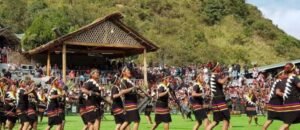 Image: Nagaland’s 60th Statehood Day
Image: Nagaland’s 60th Statehood Day
In subsequent decades, various peace talks were initiated between the Indian government and Naga rebel groups. Several accords and ceasefires were signed, but lasting peace proved elusive. Despite the challenges, the peace process continued, and significant progress was made in addressing the Naga demands greater autonomy and cultural preservation.
Statehood
After decades of struggle and negotiations, the Naga Hills District was reorganised into the state of Nagaland on December 1, 1963, becoming the 16th state of the Indian Union. The formation of the state was a significant milestone in the history of the Naga people, as it granted them a degree of political representation and administrative autonomy within the Indian federal system.
The establishment of Nagaland as a state was not an end to the Naga Independence Movement but rather a new chapter in their struggle. While it was seen as a step towards addressing some of the Naga aspirations, certain segments of the Naga populace continued to demand full independence, leading to the persistence of the armed conflict and the need for further peace negotiations.
Peace Process
Following Nagaland’s statehood, the Indian government initiated peace talks with various Naga rebel groups to find a lasting political solution to the decades-long conflict. Over the years, several rounds of negotiations took place involving different Naga factions and representatives from the Indian government.
The peace process faced challenges and setbacks but witnessed some significant breakthroughs. One of the major developments was the signing of a ceasefire agreement in 1997 between the Indian government and the National Socialist Council of Nagaland (NSCN-IM), one of the prominent Naga rebel groups. The ceasefire marked a significant step towards ending the hostilities and paving the way for dialogue.
The Framework Agreement
A major turning point in the peace process occurred on August 3, 2015, when the Indian government and the NSCN-IM signed a historic “Framework Agreement.” The agreement was a framework for a final settlement that aimed to address the long-standing Naga issue by recognising the unique history and identity of the Naga people.
The specific details of the agreement were not made public, but it was hailed as a significant step towards finding a comprehensive solution to the Naga political issue. It also acknowledged the Naga people’s right to determine their political future and preserve their distinct culture and way of life.
Challenges and Ongoing Negotiations
While the Framework Agreement was a milestone in the peace process, there have been challenges in its implementation and translating it into a final settlement. The Naga issue is complex, with multiple factions and divergent demands, making the process intricate and time-consuming.
The peace process has seen periodic disruptions, and there have been violence and factional conflicts among Naga groups. However, the Indian government and the Naga rebel groups have reiterated their commitment to the peace talks, and efforts to find a resolution continue.
Contemporary Nagaland
As of my last update in September 2021, the situation in Nagaland remained complex but had shown signs of improvement. The state had witnessed periods of relative peace, allowing for economic development and cultural resurgence. Traditional tribal customs and festivals continued to be celebrated, showcasing the rich heritage of the Nagas.
The allure of Nagaland’s stunning landscapes and vibrant culture had begun to attract tourists from within India and abroad, contributing to the state’s growth in the tourism sector. Additionally, Nagaland has also made strides in education and infrastructure development.
In conclusion, the history of Nagaland is a captivating narrative of a region with a deep-rooted cultural identity that faced immense challenges throughout the ages. The struggle for recognition and autonomy has been central to the Naga people’s journey, shaping the state’s history and aspirations. As the region continues to evolve, it remains a land of contrasts, embracing its ancient traditions and the winds of change in the modern world. The path to lasting peace and prosperity may still be winding, but the spirit of the Nagas remains resolute and resilient.
